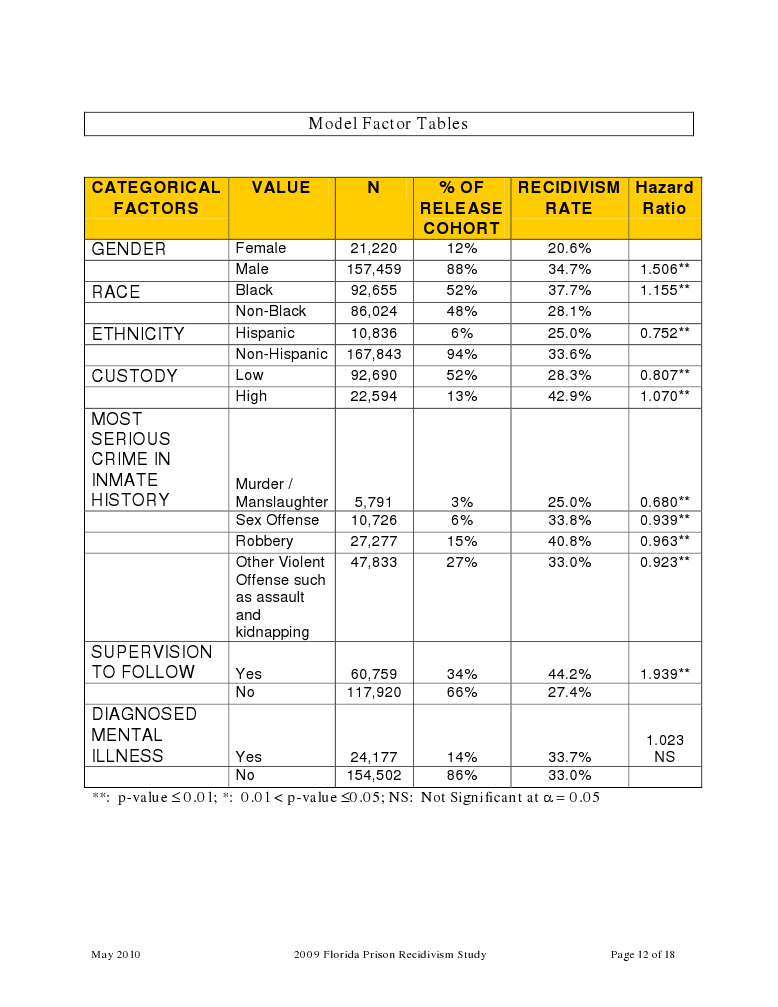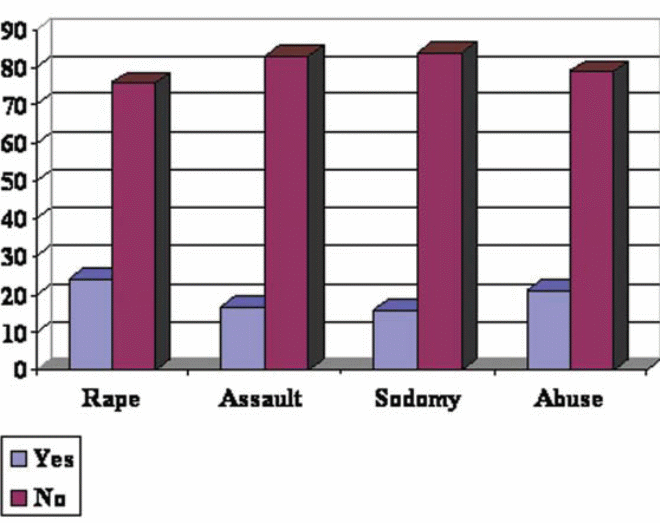Introduction
Among the most inhuman and heartless crimes committed, sex crime qualifies to be one of the worst crimes committed ever. That’s the reason why of late countries have been putting legislation aimed at tracking, preventing, and punishing sex criminals. Most of these policies are enacted with the belief that the likelihood of recidivism is highest among sex criminals.
As noted by Levenson
Recidivism rates fluctuate according to risk factors such as criminal history, victim preferences, and offender age. Longer follow-up periods have revealed that pedophiles who molest boys are most likely to re-offend (35% over 15 years), compared to the average recidivism rate of 24% over 15 years (p4).
When one is convicted for any criminal offense be it a sexual offense, as in our case, probation with mandated treatment along with a jail term is a common result. The main goal of this process is usually to prevent sex offenders from committing the same crimes in the future. The method nowadays being applied for the treatment of criminals during rehabilitation is MRT which is a method primarily employed with incarcerated adult offenders in drug abuse therapeutic communities. MRT uses a cognitive approach with the offenders where the doctor tries to change the thinking and how the criminals make their decisions with most of the victims suffering from antisocial problems.
This appears to be the most advisable and appropriate method of altering the behaviors of these criminals. Most of the experts in this field of treatment assume that successful completion of the treatment is defined by the accused admitting to committing the offense (Wakefield & Underwager, 1991). Recidivism is the likelihood of repeating a criminal or socially unfriendly action such as sex crime or any sort of crime.
The success or failure of rehabilitation depends with the offender and not much by the rehabilitation process that he went through. As many would concur, conducting a research (whether rehabilitation of sex offenders) is often a success or a waste of a time; it is a very difficult and a money consuming research project because it would mean to follow and keeping a close watch to the sex offenders for a period of several years after their release from the prison to know whether rehabilitation worked or did not (Trowbridge, nd). Studies conducted earlier in the 80s did not have the capacity of detecting the recidivism rates between those who had been rehabilitated and those who had not (Anon, 2001). It should be noted that recidivism among sex offenders is always high compared to other crimes although not all sex criminals repeat the act again.
Setting
The data collected spreads from 1989 to the year 2008 cutting across states in the US. The data mainly concentrated in Ohio, Missouri and Florida states from the United States of America.
Subjects
This research mainly contains data from the United States of America and focuses mainly on rehabilitation and chances of recidivism among sex offenders and whether there is any relationship between the two.
Procedures
The table showing the factors influencing recidivism was obtained from a Florida recidivism study conducted in the area. The other tables were obtained from the state of Ohio while the graphs were obtained from the state of Missouri
The data which is provided here was secondary data sourced mainly from the websites and journals which were concentrating on sex offences and recividism among the criminals.
Results
Hypothesis conclusion
A study done in Memphis shows that about 94% of the inmates who received standard counseling had been rearrested and 82 percent of them put to jail again and of those who had received MRT (Moral Reconation Therapy) treatment, 81% had been rearrested with 61 percent of them being jailed again. This is a clear evidence that with chances of rehabilitation in both cases being above 50% rehabilitation treatment given to the prisoners does not influnce the chances of recidivism though those who underwent through moral reconation therapy had a lower percentage showing that may be if the intensity of MRT was abit higher may be the chances of recividism would also reduce (Lollar, 2010).

Data presentation: The table above shows data from Florida recidivism study. Showing recividism rates and their relationship to other characters other than rehabilitation.
Hypothesis conclusion
The rates of recidivism depend on many factors, gender, race, and ethnicity among others. For example the probability of a black male repeating the offence is much higher compared to a non black male. The same case applies to males having higher probabilities of recividism compared to females and thus we can conclude that there is more to recividism than to the rehabilitation and treatment one goes through during probation.
Presentation
The table below shows the rate at which the sex offenders recommitted the crime for a period of 10 years after their release.
(Ref: Ten year recidivism follow-up of 1989 sex offender releases Pg, 12 By Taft.B & Wilkinson.A.R. 2001).
Hypothesis conclusion
The recidivism rate was 34% for a period of 10 years and this included those who returned due to violation of their release conditions or other crimes not generally sex offences. Thus, in this case rehabilitation in general seems to have a positive influence to the prisoner’s activities after jail release thus the experienced reduced cases of recividism.
Presentation: The magnitude of the sex offence
The table below shows the extent of the sex offence for example was it a rape, sexual battery or other sexual offences and their recidivism rates from the state of Ohio.
(Ref: Ten year recidivism follow up of 1989 sex offender releases Pg, 13 By Taft & Wilkinson (2001).

Sex Offender Recidivism in Missouri and Community Correction Options. Pg.9.
The graph above shows cases of recividism that were experienced in the state of Missouri showing chances of recividism were related to the original crime one had committed.
Hypothesis conclusion
Though probation may reduce the rates of recidivism in sexual offences the crime committed which reflects the criminal influences the rate of recidivism. Such that from the above table aboce with the data from Ohio, it is clear that during that period of 10 years the highest number of criminals who were involved in the act again were the rape criminals with a percentage of 48.6 being rearrested. The graph which follows from the state of Missouri confirms the same sentiments that though rehabilitation might reduce cases of recidivism, the nature of the crime whether the criminal was an amateur or a hardcore like displayed by the rapists determines greatly the likelihood of being re-arrested.
Presentation: The Victim Age
The table below shows the age of the victim age and the percentage of the sexual offence that recurred in the state of ohio.
(Ref: Ten year recidivism follow-up of 1989 sex offender releases Pg, 13 By Taft & Wilkinson.(2001)
Hypothesis conclusion
Those who had been arrested on basis of victimizing adults had a higher possibility of returning to the prison than those whom victims were children. Most of the times those who goes to the extent of commiting the secx crime against fellow adults are hardened criminals and their chances of recividism are high compared to those who harrass children whom most of times are still amateurs in the crime world and after undergoing reasonable treatment never commit the offence again. As shown above, the rate of those who had committed the crime on adults had a higher percentage of 56.6%
Presentation
The table below presents the percentage of sex offenders who committed a sex related crime within the period of next 10 years after their release in Ohio.
(Ref: Ten year recidivism follow-up of 1989 sex offender releases Pg, 16 By Taft & Wilkinson.(2001)
The table above shows only those with return for a sex related crime.
Hypothesis conclusion
Within the first 3 years after release more than two thirds of the criminals had been rearrested thus even with the rehabilitation unless new and sound measures are taken, the likelihood of the criminals comiting the crime again are too high
Conclusion
To the offenders of minor offences it is possible for rehabilitation to work but for most of the hardened criminals rehabilitation has got very little influence in preventing the criminal from committing the crime again. The evidence shows most of the hardened criminals have got higher chances of recommitting the crime again. Thus, may be better; and working strategies should be improvised to ensure that once one is jailed and goes through the rehabiltation process the chances of repeating the crime are minimal. Or the government should make sentences of those arrested in relation to sex offences harsh to prevent recurrence of the same acts once released.
As the evidence above has shown, sex crime recidivism figures reflect a major issue not easily understandable without thorough testing. Most of those whose legislate sex laws are justified in enacting harsh laws since the assumption that sex offenders will always reoffend seems to be true.
Reference List
Anonymous, (2001). Facts About Adult Sex Offenders. The Association for the Treatment of Sexual Abusers. Web.
levenson. J, (Not Dated) Sex offense recidivism, risk assessment, and the Adam Walsh Act. Web.
Lollar, M. (2010). Recidivism rate worse than statistics indicate, Memphis area study finds. Web.
McNeil, W. (2010). Florida Prison Recidivism study. Web.
Prepared by Institute of Public Policy. (2006). Sex Offender Recidivism in Missouri and Community Correction Options. Web.
Trowbridge, B. (n.d). does sex offender treatment work. Web.
Wakefield. H, and Underwager, R. (1991). Sex offender treatment. Web.
Wilkinson. R, and Taft, B. (2001). Ten-year recidivism follow-up of 1989 sex offender releases. Web.